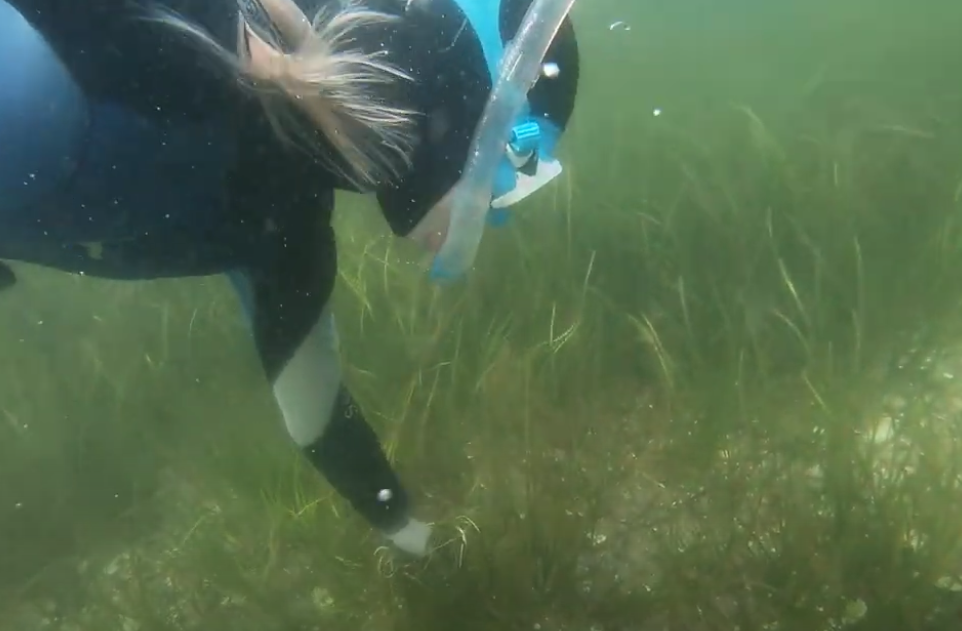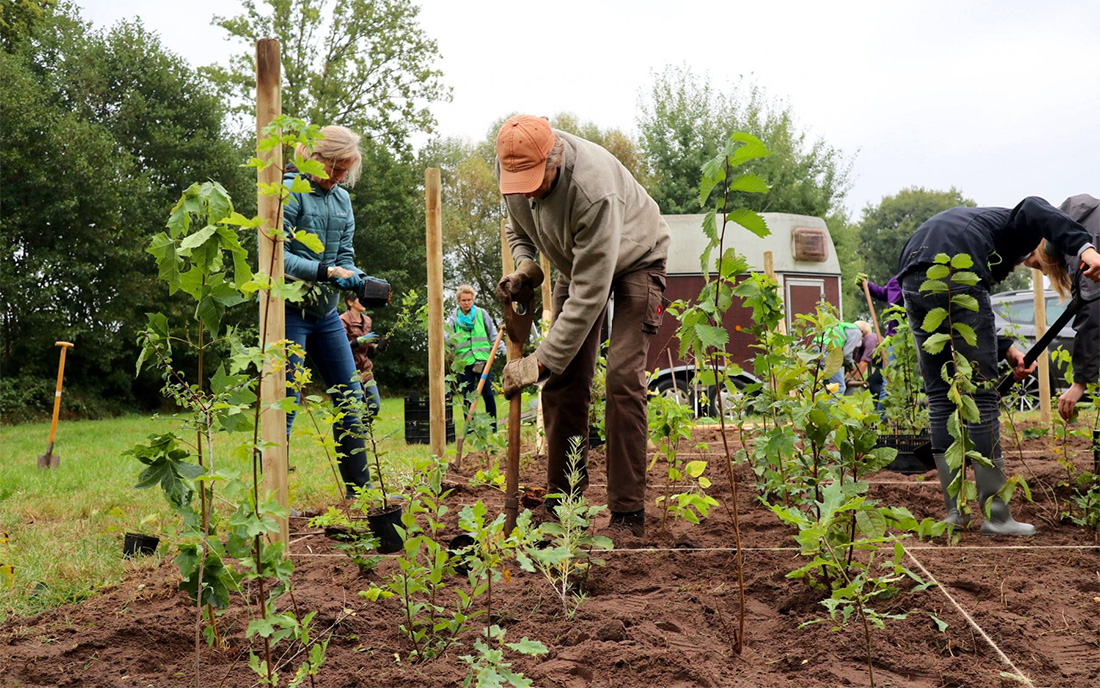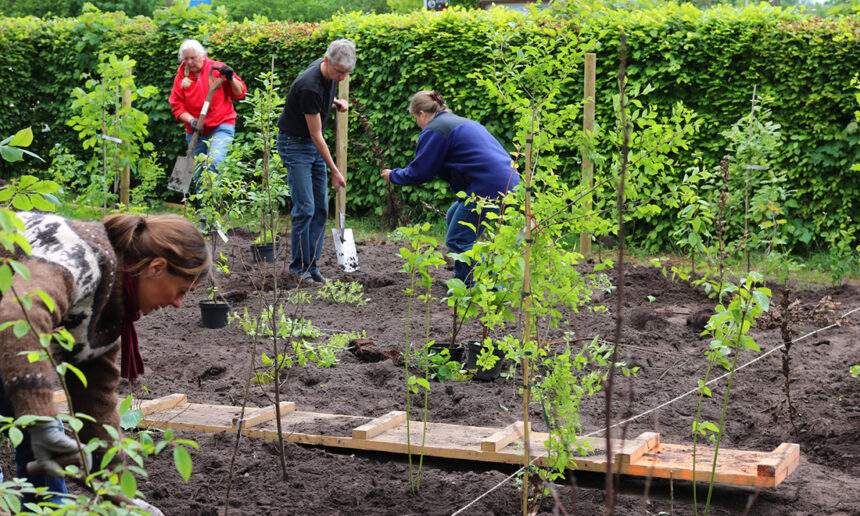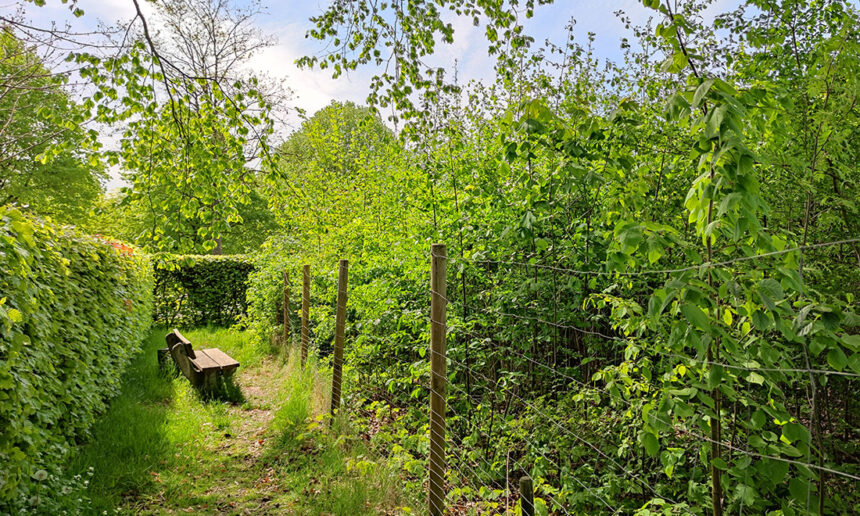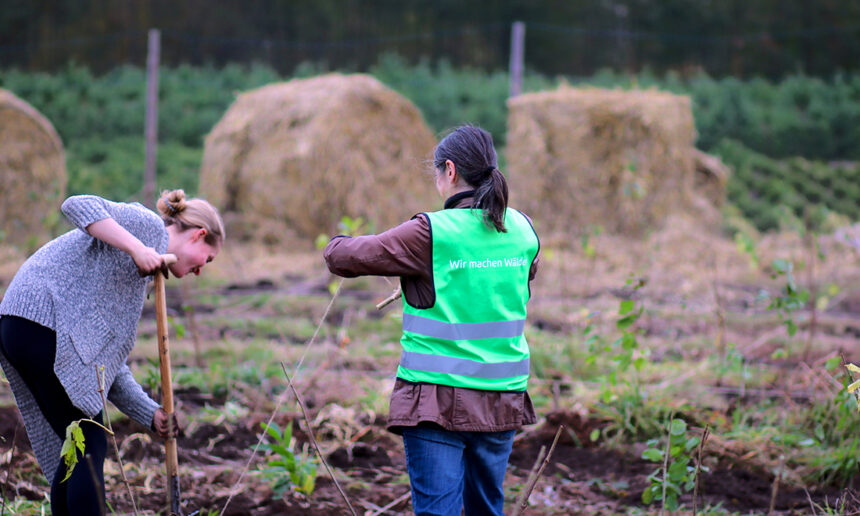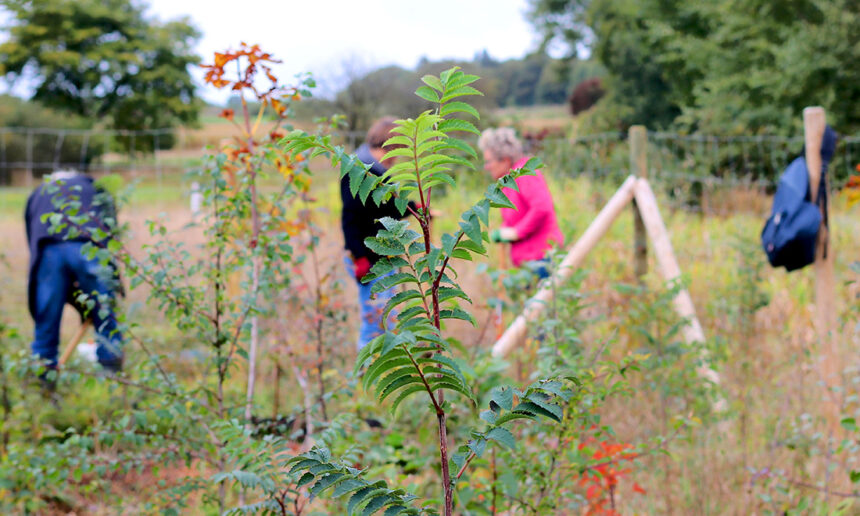Photo: © citizens-forests.org

Taking action to convert unused areas across one’s home town into tiny biodiverse forests
We make forests – the Citizens Forests initiative turns its slogan into a program and inspires citizens to actively participate in environmental protection together. Right on their own doorstep.
Support for local commitment to climate protection
Citizens Forest is a young association from northern Germany whose small team helps people in various places to plant forests in the city. The principle is very simple: citizens look locally to see if there are any small, unused areas that could be reforested. The areas do not have to be large. A “Tiny Forest” can be created from as little as 60m2. The association accompanies the process, provides support with planning, talks with the authorities involved and shows everyone involved what is possible thanks to the initiative of individuals.
The model is a sure-fire success. Because there are motivated people everywhere who want to get involved, there are plenty of unused areas and people or companies are often willing to donate to local projects. And the issue of more inner-city green space is on everyone’s agenda anyway. Around 30 projects have been implemented so far, with 500 planned over the next three years. To this end, processes are to be optimized and digitalized. The aim of Citizens Forests is to establish a Germany-wide network of local reforestation projects. At best, reforestation should become a normal part of social life.
Forest by the citizens for the citizens
Tiny Forests are more than just woodlands or green refuges for nature and people, they are living testimony to the community’s commitment to preserving the environment. Using the Japanese Miyawaki method, citizens plant previously fallow areas of 60 m2 or more densely with native tree species, creating natural biotopes with a variety of plant and animal species. The idea is to plant very densely, combining many native tree and shrub species to create a high density in a minimum of space. Saplings from regional tree nurseries such as beech, oak and rowan, field maple, wild roses, apple trees and rock pears are used. This is not only efficient, quick and cost-effective, but the natural forests also bind carbon dioxide very efficiently. However, the CO2 effect is only one aspect, as biodiversity or, for example, the cooling effect in urban areas outweighs this. The new forests created through targeted planting campaigns and protective measures must be preserved for 15 years. In addition to protecting biodiversity, Citizens Forests attaches great importance to environmental education and aims to raise awareness of environmental issues at events, for example, and establish a meeting place.
Transparent and digital
The mini forests, however small they may be, are all recorded on a digital map using GPS data and can be viewed by everyone. Citizens Forests is part of several networks and initiatives such as Afforest for international exchange and the Tree Planting Society for exchange between Tiny Forest initiatives in German-speaking countries.
Project Evaluation
Give us feedback!
How do you like the project? Answer two questions and give us some quick feedback!
Create your own evaluation with the GOOD Scorecard!
By filling out our online scorecard, you provide us with valuable feedback. You can also download the scorecard and evaluate any any project of your choice.
Contribution to the 17 Global Goals
Sustainable Cities and Communities
Citizens Forests shows how everyone of us can start climate action in town
Life on Land
The Tiny Forests create small green oases and strengthen biodiversity in the city
Climate Action
The Tiny Forests sequester carbon from the atmosphere and help to cool the cities
Partnerships for the Goals
Partnerships between citizens, administrations and companies as the key to success
Video
Images
Photos: © citizens-forests.org
